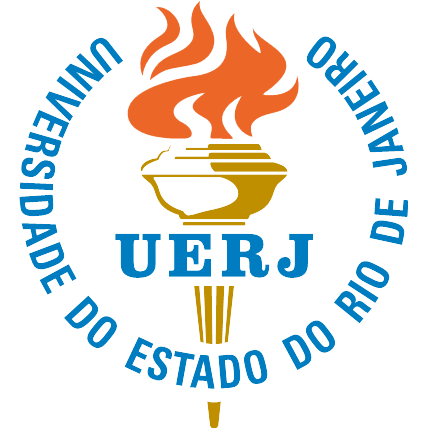Permeability analysis of masks developed for biological emergency and disaster response: a laboratory study
DOI:
https://doi.org/10.12957/reuerj.2024.84058Keywords:
Coronavirus Infections, COVID-19, Personal Protective Equipment, Masks, SupplyAbstract
Objective: to analyze the air permeability of masks developed for biological emergency response. Method: laboratory study involving tests on cloth masks with a cellulose filter element (LisLu20®), produced during the COVID-19 pandemic, disposable surgical masks, PFF2/N95 masks, and homemade cotton masks. Analyses were conducted in May and June 2020, following ASTM D 737:2018 standards Results: six tests were conducted on ten units of each mask. LisLu20® (a) - two layers: 8.6 cm³/s/cm²; LisLu20® (b) - three layers, Asian style: 6.2 cm³/s/cm²; LisLu20® (c) - three layers, PFF2/N95 style: 4.8 cm³/s/cm²; Disposable surgical mask: 18.0 cm³/s/cm²; PFF2/N95 mask: 10.2 cm³/s/cm²; Cotton knit mask: 31.1 cm³/s/cm². Conclusion: LisLu20® masks provided a physical barrier and served as a Preventive method to reduce respiratory infection risks. As a low cost, sustainable domestic product, they offered complementary emergency support to mitigate the shortage of disposable surgical masks.
References
Cevik M, Kuppalli K, Kindrachuk J, Peiris M. Virology, transmission, and pathogenesis of SARS-CoV-2 BMJ 2020; 371 :m3862 doi:10.1136/bmj.m3862
Meselson M. Droplets and aerosols in the transmission of SARS-CoV-2. N Engl J Med. 2020;382(21):2063. doi: 10.1056/NEJMc2009324.
van Doremalen N, Bushmaker T, Morris DH. Aerosol and surface stability of SARS-CoV-2 as compared with SARS-CoV-1. N Engl J Med. 2020;382(16):1564–1567. doi: 10.1056/NEJMc2004973.
Lindsley WG, Blachere FM, Law BF, Beezhold DH, Noti JD. Efficacy of face masks, neck gaiters and face shields for reducing the expulsion of simulated cough-generated aerosols. Aerosol Sci Technol. 2021;55(4):449–457. doi: 10.1080/02786826.2020.1862409.
Gurbaxani BM, Hill AN, Patel P. Unpacking Cochrane's Update on Masks and COVID-19. Am J Public Health. 2023 Oct;113(10):1074-1078. doi: 10.2105/AJPH.2023.307377.
World Health Organization. Infection prevention and control during health care when novel coronavirus infection is suspected: interim guidance, 25 January 2020. Geneva: WHO; 2020. Available from: https://www.who.int/publications-detail/infectionprevention-and-control-during-health-care-whennovel-coronavirus-(ncov)-infection-is-suspected
Riley J, Huntley JM, Miller JA, Slaichert ALB, Brown GD. Mask Effectiveness for Preventing Secondary Cases of COVID-19, Johnson County, Iowa, USA. Emerg Infect Dis. 2022 Jan;28(1):69-75. doi: 10.3201/eid2801.211591. Epub 2021 Oct 12.
Risi LR, Oliveira AB, Bernardes MMR, Ramos RS, Moutinho ECV, Passos AC. Development of tissue and cellulose masks for emergency response to the SARS-CoV-2 pandemic. Revista Enfermagem UERJ, 28,e51476, 2020. DOI: 10.12957/reuerj.2020.51476
World Health Organization. Infection prevention and control during health care when novel coronavirus infection is suspected: interim guidance, 19 March 2020. Geneva: WHO; 2020. Available from: https:// https://www.who.int/publications/i/item/10665-331495
Brasil. Ministério da Saúde. Agência Nacional de Vigilância Sanitária. Orientações Gerais – Máscaras faciais de uso não profissional. 2020. Available from: https://www.gov.br/anvisa/pt-br/assuntos/noticias-anvisa/2020/covid-19-tudo-sobre-mascaras-faciais-de-protecao/orientacoes-para-mascaras-de-uso-nao-profissional-anvisa-08-04-2020-1.pdf
World Health Organization. Advice on the use of masks in the context of COVID-19: interim guidance. Geneva: World Health Organization; 2020. Available from: https://apps.who.int/iris/handle/10665/331693
Brasil. Ministério da Saúde. Fundação Oswaldo Cruz. Covid-19: orientações sobre o uso de máscaras de proteção. 2020. Available from: https://www.fiocruzbrasilia.fiocruz.br/covid-19-orientacoes-sobre-o-uso-de-mascaras-de-protecao/#:~:text=Na%20%C3%BAltima%20semana%2C%20o%20Minist%C3%A9rio,barreiras%20na%20propaga%C3%A7%C3%A3o%20da%20doen%C3%A7a
Lima MMS, Cavalcante FML, Macêdo TS, Galindo-Neto NM, Caetano JA, Barros LM. Cloth face masks to prevent Covid-19 and other respiratory infections. Rev. Latino-Am. Enfermagem. 2020;28:e3353. DOI: 10.1590/1518-8345.4537.3353
Lozada G, Nunes KDS. Metodologia Científica. Porto Alegre: Grupo A, 2019.
Brasil. Ministério da Saúde. Nota Informativa n° 3/2020-CGGAP/DESF/SAPS/MS. Estabelecem medidas de prevenção, cautela e redução de riscos de transmissão para o enfrentamento da COVID-19, fixam a utilização de Equipamentos de Proteção Individual. Available from: https://www.gov.br/saude/pt-br/centrais-de-conteudo/publicacoes/estudos-e-notas-informativas/2020/1586014047102-nota-informativa-pdf/view
Lozada G, Nunes KDS. Metodologia Científica. Porto Alegre: Grupo A, 2019.
ASTM Designation D737-2018. International standard was developed in accordance with internationally recognized principles on standardization established in the Decision on Principles for the Development of International Standards, Guides and Recommendations issued by Trade Organization Techinical Barriers to Trade (TBT). Available from: https://www.intertekinform.com/en-au/standards/astm-d-737-2018-151282_saig_astm_astm_356061/
Lam SKK, Hung MSY, Chien WT. Uncertainty surrounding the use of face masks in the community amid the COVID-19 pandemic. Int J Nurs Stud. 2020;108:103651. Available from: 10.1016/j.ijnurstu.2020.103651
Silva, RSM; Rocha, LBA; Huang, VP; Santos, AKS; Imoto, AM; da Silva, VM. Uso de máscara de tecido pela população na contenção da disseminação da COVID-19: scoping review. Com. Ciências Saúde 2020; 31:162-83. Available from: https://revistaccs.escs.edu.br/index.php/comunicacaoemcienciasdasaude/article/view/730
Neupane BB, Mainali S, Sharma A, Giri B. Optical microscopic study of surface morphology and filtering efficiency of face masks. Peer J. 2019;7. DOI: 0.7717/peerj.7142
Silva ACO, Almeida AM, Freire MEM, Nogueira JA, Gir E, Nogueira WP. Cloth masks as respiratory protections in the COVID-19 pandemic period: evidence gaps. Rev Bras Enferm. 2020;73(Suppl 2):e20200239. DOI: 10.1590/0034-7167-2020-0239
MacIntyre RC, Hasanain JS. Community universal face mask use during the COVID 19 pandemic-from households to travellers and public spaces. J Travel Med. 2020. 18;27(3):taaa056. doi:10.1093/jtm/taaa056
Kneodler TS, Silva ES, Haberland DF, Silva TASM, Oliveira AB. Tecnologias sociais para ações de gestão de risco em desastres: uma revisão de escopo. Saúde debate. 2022;46(spe8):187-200. DOI: 10.1590/0103-11042022E814
Campos LF, Vecchia LPD, Tavares JP, Camatta MW, Magnago TSBS, Pai DD. Implicações da atuação da enfermagem no enfrentamento da COVID-19: exaustão emocional e estratégias utilizadas . Esc Anna Nery. 2023;27:e20220302. DOI: 10.1590/2177-9465-EAN-2022-0302pt
Published
How to Cite
Issue
Section
License
Copyright (c) 2024 Lisandra Rodrigues Risi, Annibal José Roris Rodriguez Scavarda do Carmo, Anupong Wongchai, Shahadat Khan, Margarida Maria Rocha Bernardes, Alexandre Barbosa de Oliveira

This work is licensed under a Creative Commons Attribution 4.0 International License.
When publishing in Revista Enfermagem UERJ, the authors declare that the work is their exclusive authorship and therefore assume full responsibility for its content.
Authors retain copyright to their article and agree to license their work using a Creative Commons Attribution International Public License (CC BY), thereby accepting the terms and conditions of this license (https://creativecommons.org/licenses/by/4.0/legalcode.en), which allows material created by the author to be distributed, copied and displayed by third parties. The original work must be cited and present a link to the article available on the website of the journal in which it was published.
The Copyright of the articles published in Revista Enfermagem UERJ belongs to their respective author(s), with the rights of first publication assigned to Revista Enfermagem UERJ, with the work simultaneously licensed under a Creative Commons License CC BY, which allows sharing of work with recognition of authorship and initial publication in this journal.
The authors grant Revista Enfermagem UERJ the right of first publication, to identify themselves as the original publisher of the work and grant the magazine a license of non-exclusive rights to use the work in the following ways:
- Sell and/or distribute the work in printed copies and/or electronic format;
- Distribute parts and/or the work as a whole with the aim of promoting the magazine through the internet and other digital and printed media;
- Record and playback work in any format, including digital media.
In line with the journal's policies, each published article will be assigned a Creative Commons Attribution (CC BY) license.









